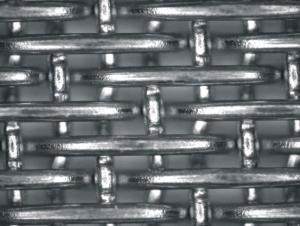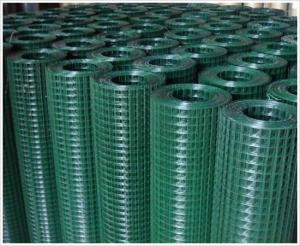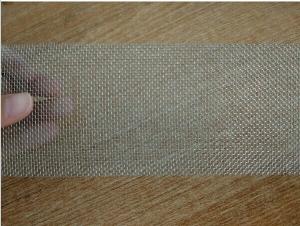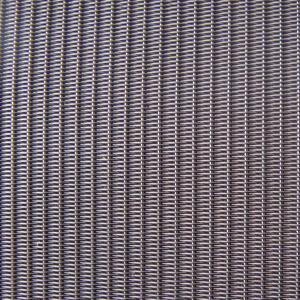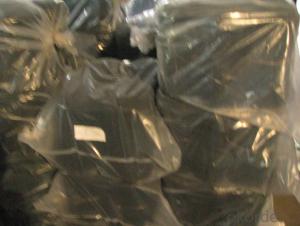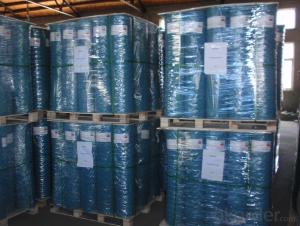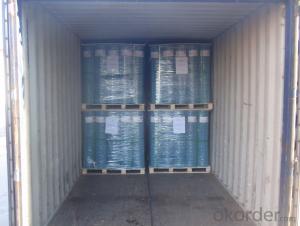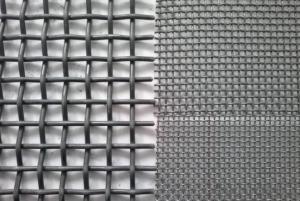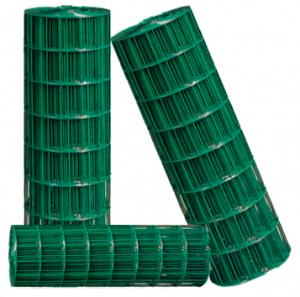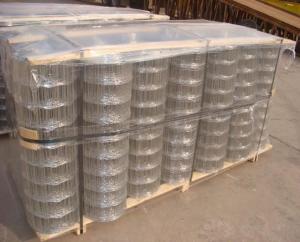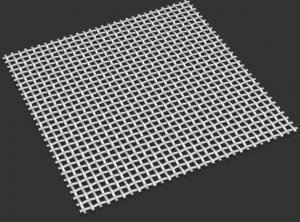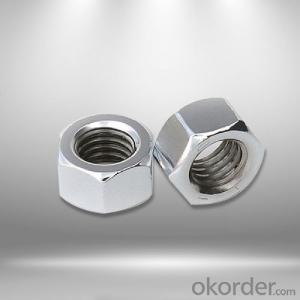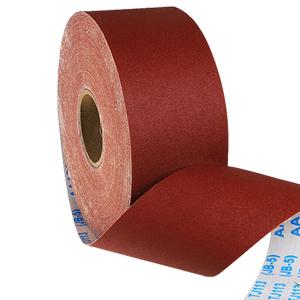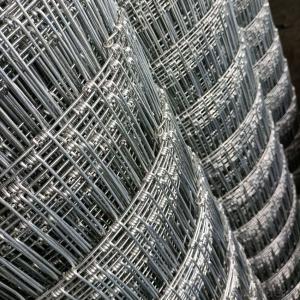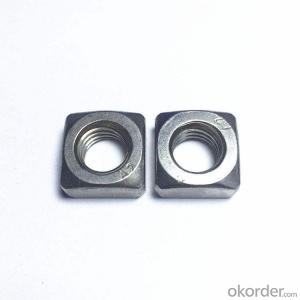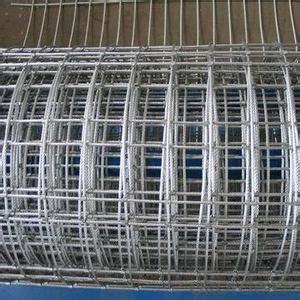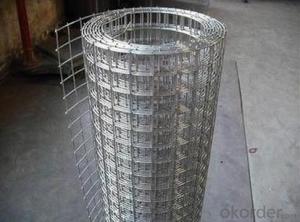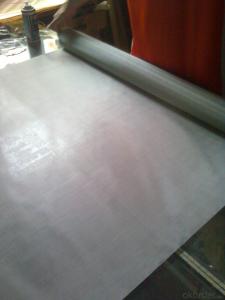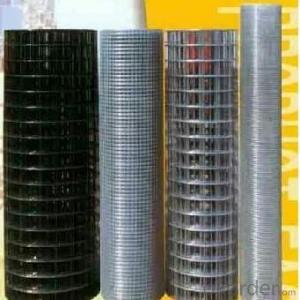Stainless Steel Five Heddle Mesh
- Loading Port:
- Tianjin
- Payment Terms:
- TT OR LC
- Min Order Qty:
- -
- Supply Capability:
- 500 m²/month
OKorder Service Pledge
OKorder Financial Service
You Might Also Like
Five Heddle Weave Wire Cloth providesa rectangular opening. The unique design of this mesh can assist increaseddrainage and flow properties. This mesh also has a smooth surface on one side.
Material: Stainless steel wire SUS304,SUS304L, SUS316 or SUS316L.
Standard width of stainless steel wire mesh: 1m or48". Standard roll length of stainless steel wire mesh: 30m or100'.
Packing: wrapped with moister-proofpaper, then in wooden cases.
Typical Use: Industrial woven wirecloth is used in filtration of petroleum chemical industries, in the form offilter ribbons or filter elements.
Meshes | Mesh | Filter | Filter | Water Permeability | Air Permeability |
107x60 | .0177/.45 | 0.077 | .16-.18 | 16.6 | 7620 |
78x58 | .0213/.54 | 0.127 | .18-.22 | 17.6 | 7970 |
63x33 | .0331/.84 | 0.1 | .26-.29 | 16.6 | 7070 |
23.3x19.4 | .0669/1.7 | 0.49 | .65-.75 | 21.8 | 9550 |
14.5x13.1 | .0984/2.5 | 0.85 | 1.15-1.20 | 21.4 | 9030 |
- Q:What are the weight and density of steel wire mesh?
- The weight and density of steel wire mesh vary depending on the specific type and thickness of the wire used. Generally, steel wire mesh is made from low carbon steel or stainless steel wires. The weight of steel wire mesh is typically measured in pounds per square foot (PSF) or kilograms per square meter (Kg/m²). The density of steel wire mesh is influenced by the density of the steel material itself, which is around 7.85 grams per cubic centimeter (g/cm³) for low carbon steel and varies slightly for stainless steel depending on the grade. To calculate the density of steel wire mesh, the weight is divided by the volume of the mesh. The volume is determined by multiplying the thickness of the wire mesh by the area it covers. To obtain accurate weight and density measurements for specific steel wire mesh products, it is essential to refer to the manufacturer's specifications or consult a materials engineer who can provide precise calculations based on the specific type and dimensions of the wire mesh.
- Q:Is steel wire mesh resistant to saltwater corrosion?
- Yes, steel wire mesh is generally resistant to saltwater corrosion due to its composition and protective coatings. However, the level of resistance can vary depending on the specific type of steel used and the environmental conditions.
- Q:How does steel wire mesh perform in high-vibration applications?
- Steel wire mesh performs well in high-vibration applications due to its inherent strength, durability, and flexibility. The interlocking nature of the wire mesh provides stability and prevents the mesh from loosening or unraveling under intense vibrations. This makes it an ideal choice for various industries where vibrations are common, such as construction, mining, and transportation. One of the key advantages of steel wire mesh in high-vibration applications is its ability to absorb and distribute the vibrations evenly across the mesh. This helps to minimize the impact of vibrations on the surrounding structure or equipment, reducing the risk of damage or fatigue failure. The mesh acts as a barrier, effectively isolating the vibrations and preventing them from propagating further. Moreover, steel wire mesh is resistant to corrosion, which is particularly important in environments where high moisture levels or exposure to chemicals is a concern. This resistance ensures the longevity and performance of the wire mesh even in harsh conditions, allowing it to withstand the test of time and maintain its structural integrity. Furthermore, steel wire mesh offers a high strength-to-weight ratio, meaning it can withstand significant amounts of vibration without compromising its structural stability. This lightweight nature of the mesh makes it easier to handle and install, reducing the overall labor and costs associated with its implementation in high-vibration applications. In summary, steel wire mesh performs exceptionally well in high-vibration applications due to its strength, durability, flexibility, and ability to absorb and distribute vibrations. Its resistance to corrosion and lightweight nature further enhance its suitability for use in various industries where vibrations are prevalent.
- Q:Can steel wire mesh be used for mining?
- Yes, steel wire mesh can be used for mining. It is commonly used in various mining applications due to its strength, durability, and versatility. Steel wire mesh is often used as a protective barrier in underground mines to prevent loose rocks or debris from falling onto workers or equipment. It is also used as a reinforcement material in mining tunnels and shafts to provide additional structural support. Additionally, steel wire mesh can be used to separate and classify different sizes of minerals or ores during the extraction process. Its high tensile strength and resistance to corrosion make it an ideal choice for mining operations, where harsh conditions and heavy loads are common.
- Q:What are the weight and strength specifications of steel wire mesh?
- The weight and strength specifications of steel wire mesh vary depending on the specific type and gauge of the mesh. However, steel wire mesh is generally known for its strength and durability. It is available in various thicknesses and sizes, allowing for different weight capacities and strength levels. The weight and strength specifications of steel wire mesh can be determined by referring to the manufacturer's specifications or consulting engineering standards and codes.
- Q:How is steel wire mesh used in gabion walls?
- Gabion walls rely on steel wire mesh as a vital element in their construction. These walls, utilized as retaining walls, are built by filling large wire baskets or cages, known as gabions, with stones or other materials. The steel wire mesh comprises the framework of these gabions, imparting strength and stability to the wall. In the construction of gabion walls, the steel wire mesh commonly consists of galvanized steel, which is coated with a layer of zinc to shield it from corrosion. This ensures the gabion wall's ability to withstand external factors and maintain durability over an extended period. The wire mesh is woven in a hexagonal pattern, forming interconnected compartments within the gabion. This design guarantees the even distribution of weight and pressure throughout the wall, preventing excessive strain on any particular section. Additionally, it provides flexibility, allowing the wall to adapt and move along with the underlying ground, which is particularly important in areas with unstable soil or high water levels. To construct a gabion wall, the steel wire mesh is initially shaped and sized into the desired form of the gabion basket. These baskets are subsequently filled with stones or other materials, such as concrete rubble or recycled materials, to create a solid mass. The stones within the gabions serve both decorative and stabilizing purposes, adding weight and stability to the wall. Once filled, the gabion baskets are stacked atop one another, often in a stepped or terraced arrangement, to achieve the desired height and shape of the wall. The compartments within the gabions allow for effective drainage, reducing the risk of water pressure building up behind the wall and causing damage. In conclusion, the steel wire mesh employed in gabion walls plays a crucial role in delivering strength, stability, and flexibility to these structures. It enables the construction of enduring and dependable retaining walls that can withstand various environmental conditions, making them a popular choice for a wide range of applications, including erosion control, soil stabilization, and landscape design.
- Q:What are the different colors available for steel wire mesh?
- There are several different colors available for steel wire mesh, depending on the specific requirements and preferences of the customer. The most commonly used color for steel wire mesh is silver, which is the natural color of stainless steel. This color is often chosen for its sleek and industrial look. However, steel wire mesh can also be coated or painted in various colors to provide enhanced aesthetics or to match the surrounding environment. Some popular coating options include black, green, and white. These colored coatings not only add a touch of vibrancy but can also provide additional protection against corrosion and UV rays. Ultimately, the color options for steel wire mesh are diverse, allowing customers to choose the most suitable option for their specific application or design.
- Q:Is steel wire mesh suitable for use in agricultural fencing?
- Yes, steel wire mesh is suitable for use in agricultural fencing. It is a durable and strong fencing material that can effectively contain livestock, protect crops from grazing animals, and prevent unauthorized entry into agricultural areas. Steel wire mesh is resistant to weather conditions, such as wind and rain, and can withstand the pressure exerted by large animals. It is also highly versatile, as it can be easily installed and adjusted according to specific fencing needs. Additionally, steel wire mesh provides good visibility, allowing farmers to monitor their livestock and crops easily. Overall, steel wire mesh is a popular choice for agricultural fencing due to its durability, strength, versatility, and effectiveness in protecting agricultural areas.
- Q:What are the different spacing options available for steel wire mesh?
- Steel wire mesh offers a variety of spacing options to meet specific application requirements. Here are a few commonly used options: 1. Standard spacing: This is the most commonly used option, with evenly spaced wires at a predetermined distance. The spacing can vary based on factors such as mesh size, wire diameter, and intended use. 2. Fine spacing: This option provides a denser mesh with narrower gaps between the wires. It is ideal for applications requiring finer filtration or separation, such as industrial sieving or particle retention. 3. Coarse spacing: With wider gaps between the wires, this option allows larger particles or objects to pass through. It is suitable for applications where a less restrictive barrier is needed, such as fencing or animal enclosures. 4. Custom spacing: For unique project needs, custom spacing options can be fabricated to meet specific requirements. When selecting the appropriate spacing option for steel wire mesh, it is crucial to consider factors like intended function, desired strength, and environmental conditions. Seeking guidance from a reputable supplier or manufacturer can help determine the most suitable spacing option for a given application.
- Q:Can steel wire mesh be used for sound insulation?
- Yes, steel wire mesh can be used for sound insulation to some extent. It can help in reducing sound transmission by blocking and absorbing certain frequencies. However, its effectiveness as a sound insulator may be limited compared to other specialized soundproofing materials like acoustic foam or insulation panels.
1. Manufacturer Overview |
|
|---|---|
| Location | |
| Year Established | |
| Annual Output Value | |
| Main Markets | |
| Company Certifications | |
2. Manufacturer Certificates |
|
|---|---|
| a) Certification Name | |
| Range | |
| Reference | |
| Validity Period | |
3. Manufacturer Capability |
|
|---|---|
| a)Trade Capacity | |
| Nearest Port | |
| Export Percentage | |
| No.of Employees in Trade Department | |
| Language Spoken: | |
| b)Factory Information | |
| Factory Size: | |
| No. of Production Lines | |
| Contract Manufacturing | |
| Product Price Range | |
Send your message to us
Stainless Steel Five Heddle Mesh
- Loading Port:
- Tianjin
- Payment Terms:
- TT OR LC
- Min Order Qty:
- -
- Supply Capability:
- 500 m²/month
OKorder Service Pledge
OKorder Financial Service
Similar products
New products
Hot products
Related keywords
